If you’re looking for the most astonishingly elaborate leaves on the planet, look no further.
Calathea musaica is the one for you.
Musaica translates to “mosaic”. And with leaves that look as if they were hand-painted by a classical master, it’s easy to see why this plant inspired the title.
Its striking leaves are adorned with an intricate panel pattern, with tiny little emerald tiles outlined by a deep forest green.
Even the leaf shape is stunning – they have an almost crinkled, rippled texture.
I could stare at it all day.
While Calathea are known by the houseplant obsessed to be rather arduous, Calathea musaica is considerably easier to keep happy if you know what to watch out for.
Let’s go!
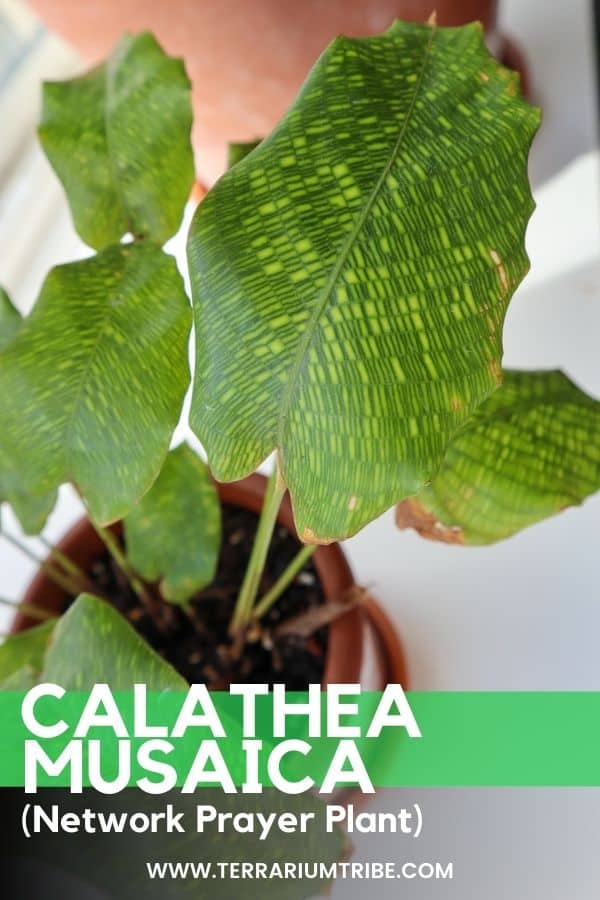
The Plant, The Myth, The Legend – Calathea musaica
First things first, this plant has more names than Daenerys Targaryen.
While you’ll most likely know it as Calathea musaica, Calathea ‘Network’, or the Network Prayer Plant, all of these common names are technically incorrect.
This fake-it-till-you-make-it plant isn’t even a Calathea at all (not anymore, at least).
That’s why our plant is a little easier to care for than you might expect.
It is still an arrowroot (Marantaceae), but it’s a member of the slightly less fussy Goeppertia family, sort of making it a Calathea cousin.
So, the official scientific name of the plant is Goeppertia kegeljanii. Catchy, right?
And we’re not done there – over the last two centuries, it has been known as the Calathea bella, Phyllodes bella, Maranta bella, Goeppertia bella, and Maranta tessellata, just to keep you on your toes. (Bella being a very deserved term with those magnificent ornamental leaves).
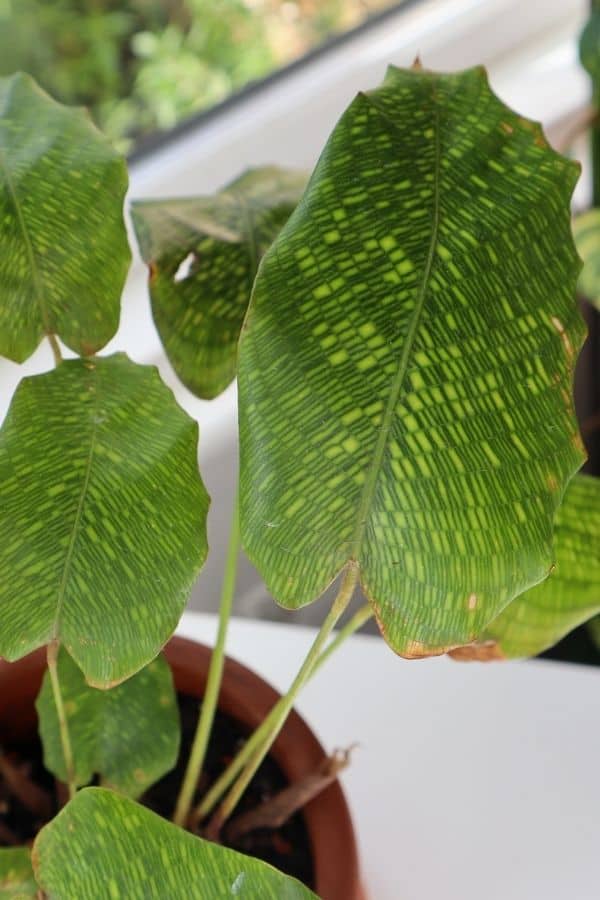
But, to avoid giving you a headache, I’m going to stick with Calathea musaica for this post.
Phew. Now we’ve got that hassle out of the way, let’s get stuck into the care guide!
Where to Buy Calathea musiaca
See the links below to purchase from reputable terrarium plant shops and marketplaces (may include affiliate links).
Calathea musiaca Care & Growth
At a Glance
| Plant Type | Foliage |
| Lighting | Bright indirect light |
| Temperature | 65-80°F (18-27°C) |
| Watering | Moderate even watering |
| Humidity | 50-80% humidity |
| Growth | Up to 1ft |
Lighting
In the Brazilian rainforests, the Calathea musaica grows on the forest floor beneath the luscious canopy, receiving only dappled, indirect sunlight.
In the home, this is exactly what we want to recreate.
Ladies and gentlemen, give it up for the houseplant gold standard: bright indirect light.
Bright light because, after all, even when filtered through the canopy, it’s still the blazing Brazilian sun, isn’t it?
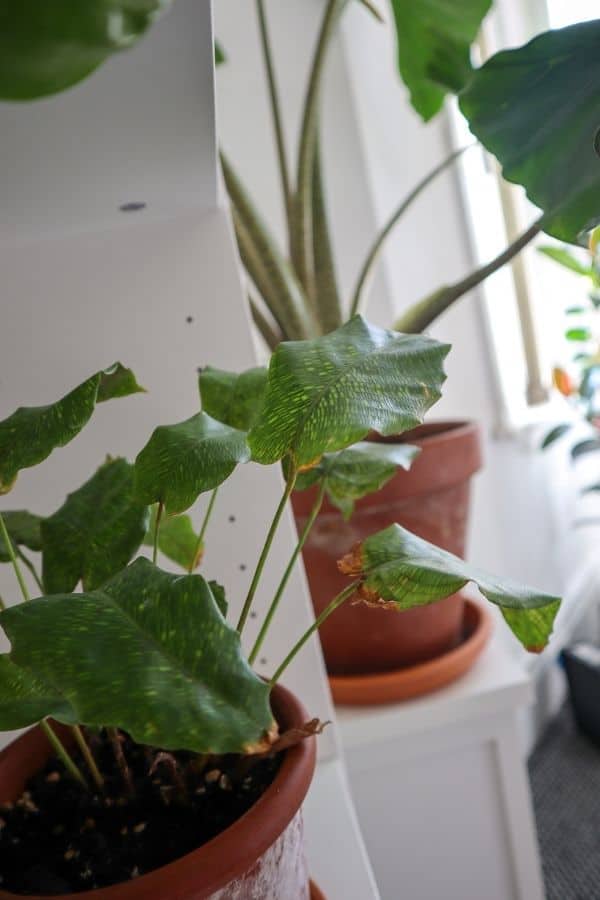
A little direct sunlight here and there won’t do any harm (the musaica is a little more tolerant of light conditions than your typical Calathea), but if the plant is sat in direct harsh rays or not getting enough light, you’ll likely run into browning leaves.
So keep an eye out for any brown leaf tips, edges, or brown spots, and be ready to move it closer to/ further away from the light source as the season changes.
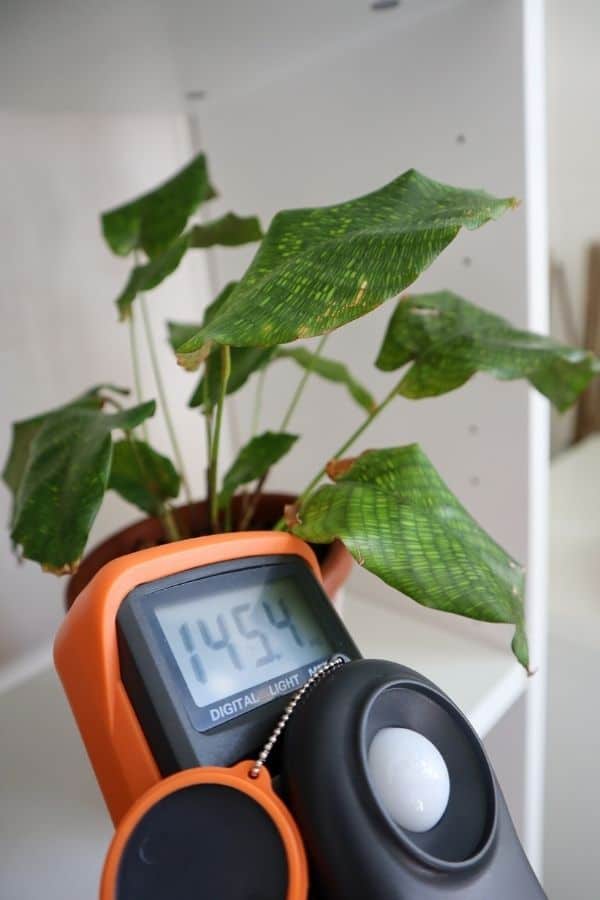
Watering
The musaica thrives in nice, evenly moist soil.
Like many tropical plants, it’s prone to root rot if kept in soggy soil too frequently, and it’ll also unhelpfully struggle if left in extremely dry soil for too long.
But fear not! Just a couple of handy tips will take watering this plant from a logistical nightmare to a well-oiled machine.
Here’s how to avoid a plant disaster and keep your plant happy:
- Regularly test the soil with your finger to check if it needs a drink.
- Only water it when the soil is feeling a little try to the touch.
- Make sure it has a pot with a drainage hole.
- Tip away any excess from the drainage tray so it isn’t sat in swampish conditions.
It’s that simple!
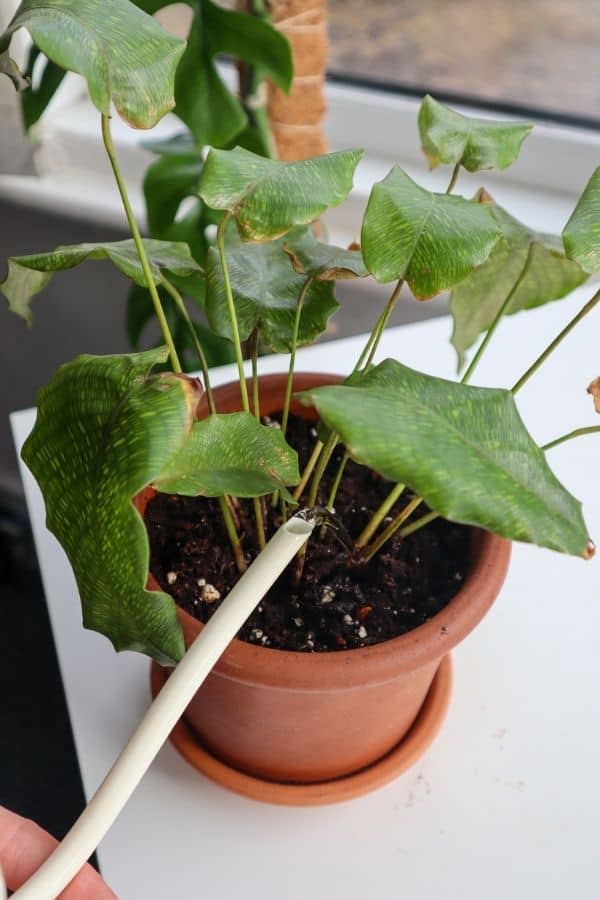
The musaica might sound like a picky plant, but it’s relatively undemanding when you’ve learned how to interpret the signs.
If you’re popping your musaica in a terrarium build, however, it could be a good idea to add a false bottom as a failsafe. Seeing as they’re prone to root rot, they do best with a little airflow, too – so be sure to take your lid off every so often.
Should I use tap water or filtered/ distilled water for Calathea musaica?
Calathea are famed for their extremely middle-class tap water intolerance, and being close cousins, Goeppertia are no different.
But before you rush to the shops to stock up on imported Evian for your plant, it’s worth checking the hardness of the tap water where you live.
You should be able to find out readily with a quick google. Or, just peek in the bathroom or your kettle to check for limescale…
The “harder” the water, the higher the mineral content, which could upset or offend your dear Calathea. So if that’s the case, you’ll definitely want to filter it (or use rainwater – it’s free).
If you have relatively soft tap water like me, you should have no issues using tap water as the mineral content is so low it won’t distress your plant, and your wallet will thank you.
Terrariums are a different story; however, the minerals (even tiny amounts in soft water) can deposit on the glass and ruin the look. So you’ll want de-ionized water where possible.
Substrate / Soil
As with any work of art, this plant is only as good as the canvas.
So, if you want a vibrant and healthy Calathea musaica, it’s important to give it the right substrate mix.
To balance its (somewhat) finicky love of moisture and hatred of soggy conditions, a mix with plenty of water retention and drainage will ensure it always has access to water but is never suffocated by it.
The roots need to breathe, too, after all.
I always like to use coco coir as a base here, followed up with some earthworm castings for natural nutrients and, finally, some extra drainage elements, e.g., orchid bark, pumice, or perlite.
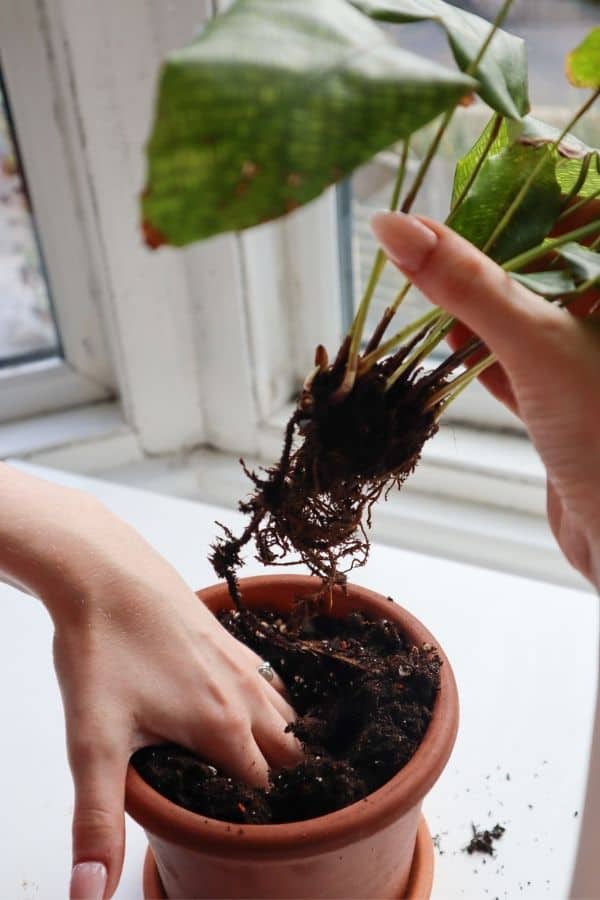
All the above drainage elements would work in a terrarium, but for a natural look, I’d avoid the perlite (and I’d add sphagnum moss for extra water retention and mold resistance).
Temperature & Humidity
The beautiful musaica appreciates a moderate to high humidity level and yummy warm temperatures.
For humidity, something in the range of 50-80% is great. You can’t really overdo it, but a lack of humidity, on the other hand, can result in brown leaf tips.
Your plant will also be perfectly comfortable in average household temperatures.
I’d aim for 65-80°F (18-27°C), but it’d enjoy higher temperatures too, and a pinch could tolerate lower temperatures, though likely at the cost of slow growth.
You’re more likely to run into issues with cold drafts and harsh artificial heat. The true natural enemy of the Calathea.
Calathea can be fragile little souls (and while technically a Goeppertia, the same can be said for the sensitive musaica).
So to avoid a disaster, just be careful with your plant placement. Oh, and avoid radiators like the plague – I had to learn the hard way…
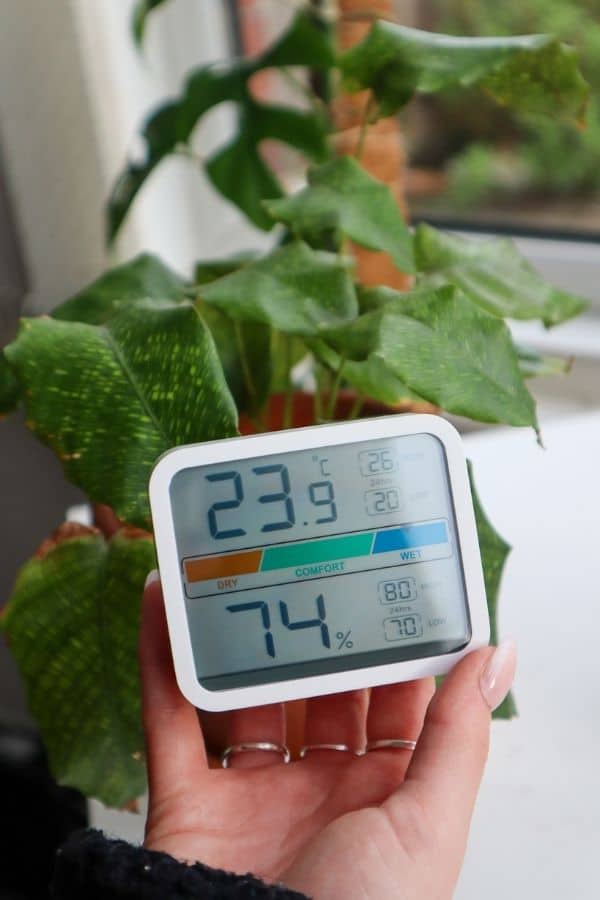
Growth
On the pruning front, the musaica is a gladly low-maintenance plant.
In fact, if it’s healthy, the only thing you’ll need to upkeep is just snipping off any deceased leaves from time to time.
Remember, yellow foliage isn’t necessarily a sign of anything sinister – it could just be routine leaf loss.
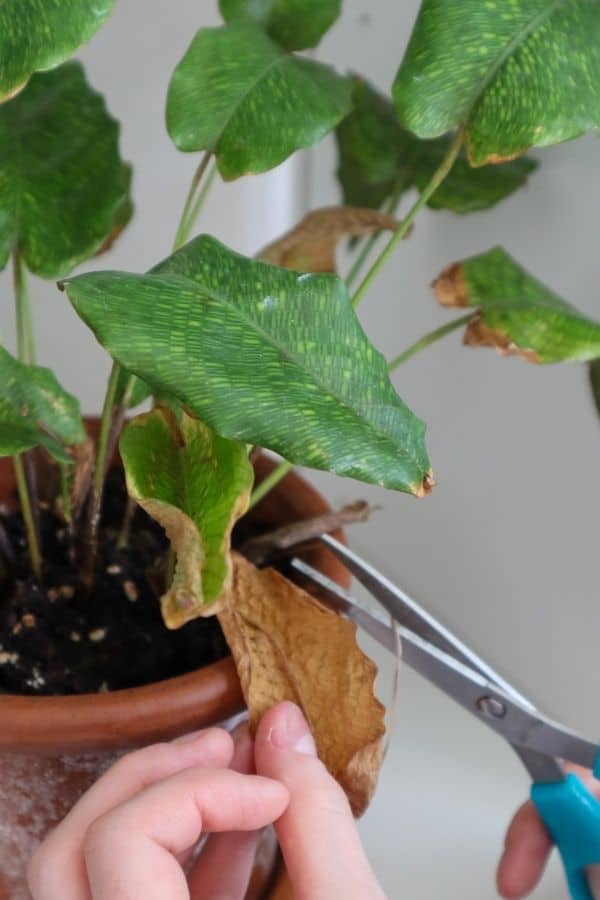
The main thing you’ll need to keep an eye on is checking for common pests.
We actually had a whitefly infestation on our plant recently (our first-ever case of plant pests – I’m sure you can imagine how distraught I was). Wiping a little soapy neem oil on the leaves with a damp cloth did the trick.
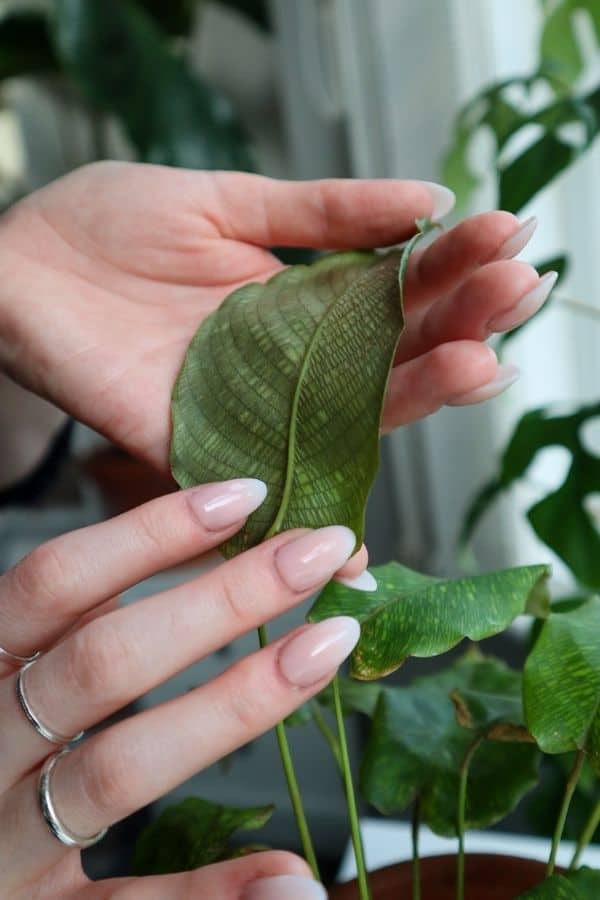
In fact, wiping your leaves (even without pests) is a good way to keep the leaves lovely and clean.
When doing well, Calathea musaica can grow up to a foot tall.
So, if you’re putting your plant in a terrarium, just note that it might need swapping out for a smaller plant every year or so if it outgrows the container.
Propagation
Put your scissors down, cowboy! This plant is propagated by root division.
Which means, unlike tropical vines, you’ll need a fairly established and mature plant to start off with.
A plant that’s too small, young, or unhealthy won’t have the root structure necessary to propagate.
Start by easing your mother plant out of the pot (hit two birds with one stone and do it in repotting season), and then gently tease the plant apart.
You can snip through the root ball/rhizome structure if necessary, but be careful to keep as much intact as possible.
Once you’ve separated out your plant into smaller plants, each with a decent root ball attached, you can plant them separately into nice fresh soil.
Plant division is somewhat traumatic for your plant – as I’m sure you can imagine – so just don’t do this too often.
Varieties and Similar Plants
Ornate foliage lovers rejoice! There’s no such thing as a Plain Jane in the Marantaceae universe.
You’ll never meet a family of plants quite so ostentatious.
While the elaborate mosaic patterns of the musaica are unmatched, there are many plants with equally theatrical designs and vibrant colors:
You’re welcome.
Frequently Asked Questions
Calathea musaica and Calathea ‘Network’ are synonymous, although the plant’s scientific name is actually Goeppertia kegeljanii, so it’s not technically classified as a Calathea at all.
Calathea musaica is non-toxic both for our furry friends and people, making it a fantastic option for households with little mouths on the loose.
